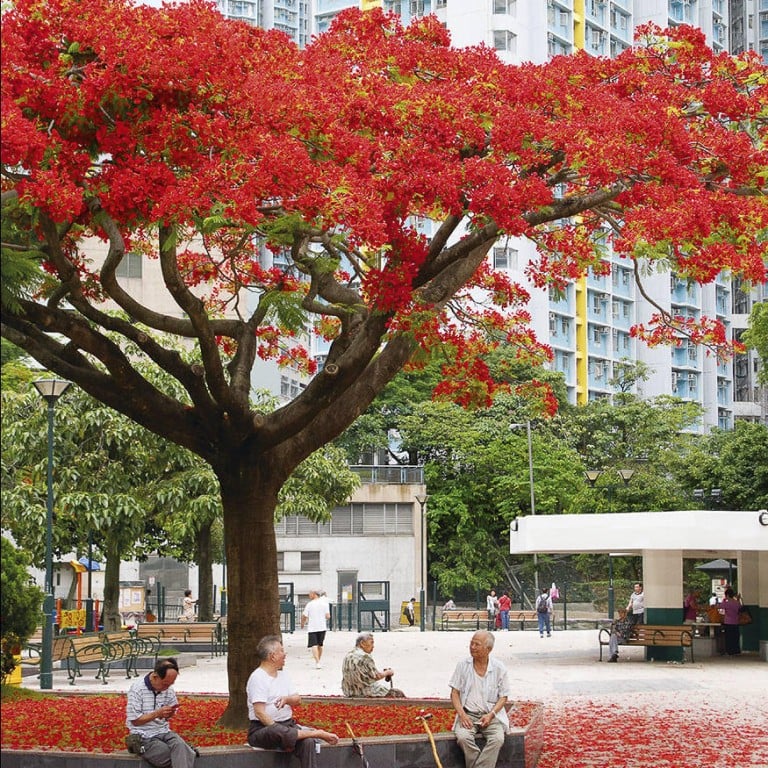
Hong Kong’s flame of the forest trees: much-loved but relatively recent immigrants
With its fiery blossoms, Hong Kong’s flame of the forest tree is a much-loved but relatively recent immigrant, writes Jason Wordie.
Among the great early summer joys in Hong Kong is the sight of magnificent flame of the forest trees coming into flower along the territory’s roadsides. Throughout May and June, this spectacular, showy tree becomes immediately recognisable for the vivid red blossoms covering its spreading canopy.
Depending on soil conditions, the flowers can vary in colour from pale scarlet and almost orange to deep russets and vermilion. Beneath the trees, roads and footpaths become thickly carpeted with fine red petals for weeks.
A native of Madagascar, this superb specimen goes by a variety of names in the countries into which it has been introduced. In the West Indies, for example, the tree is known as delonix for its botanical name, Delonix regia. It is called the gol mohur in India and Sri Lanka, where it is a common street tree in cities such as Calcutta that have climates similar to our own. And in tropical Australia and Fiji, where it is extensively grown and frequently forms roadside avenues, it is known as the poinciana or royal poinciana.
Hong Kong Island’s southern coast has numerous mature specimens in surviving old gardens, especially around Deep Water Bay, Repulse Bay and Stanley. For decades, the Repulse Bay Hotel was internationally famed for its flame of the forest trees, which featured prominently on postcards and the hotel’s own advertising material. A few old specimens survive around the redeveloped apartment complex on the site, and several new ones have been planted.
According to government botanist Geoffrey Herklots, who described the species in his richly detailed book The Hong Kong Countryside Throughout the Seasons, first published in 1951, the flame of the forest was successfully introduced into Hong Kong in 1908, although there may have been earlier attempts. However, from where the tree was first introduced has not been recorded. From Hong Kong, cultivation spread into southern China and these trees are now commonly seen roadside in Guangzhou.
By the late 1920s, hundreds of specimens had been planted right across Hong Kong. It was particularly popular in the New Territories. “[The trees] along the roadside between Castle Peak and Au Tau and between San Tin and Fanling were planted in 1913 and 1914. And those between Fanling and Tai Po Market in 1915,” Herklots wrote.
Most of these have long since been felled as roads have been widened, and few were replanted. Outlying areas around Kam Tin and Shek Kong still have – at least for now – many mature specimens.
Flame of the forest trees are sensitive to extreme cold and Herklots noted “in 1918, about 800 trees were killed by the cold dry frost of January”.
The trees take about 10 years to mature into attractive flowering specimens in Hong Kong’s generally shallow, nutrient-poor soils.
Unfortunately – but sadly typically – new trees tend to be planted too closely together, which inhibits proper growth. This is done to give a rapid “finished effect” to roadside plantings rather than as part of a long-term vision of how the landscape will look after a decade or so.
Given Hong Kong’s tendency to constantly dig up and replace municipal plantings, and the poorly executed “maintenance” work undertaken by untrained, poorly supervised workers with – at best – minimal botanical knowledge, a decade hence there may be nothing left to thin out anyway.
For more on Hong Kong history and heritage, go to scmp.com/topics/old-hong-kong

